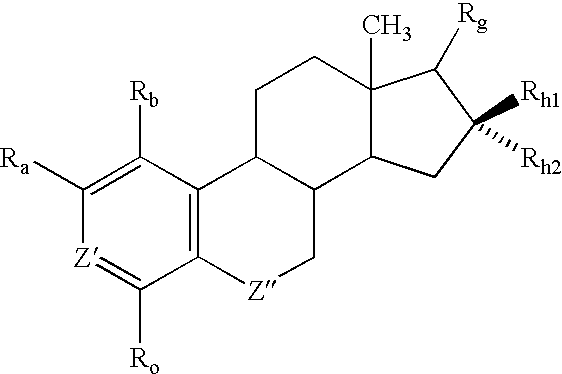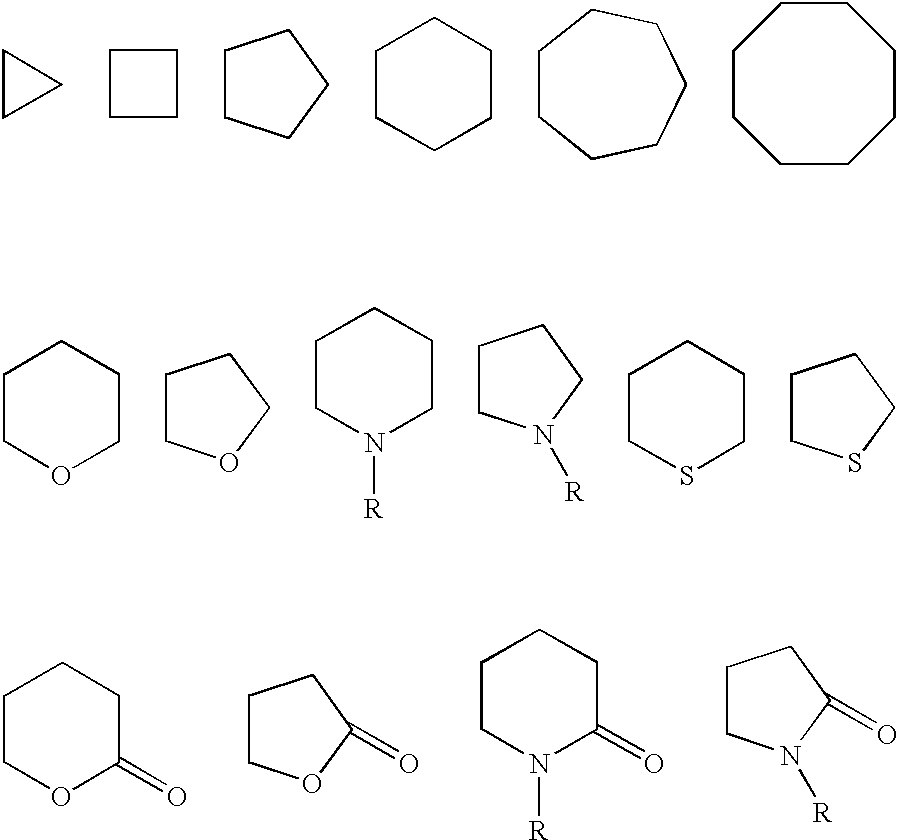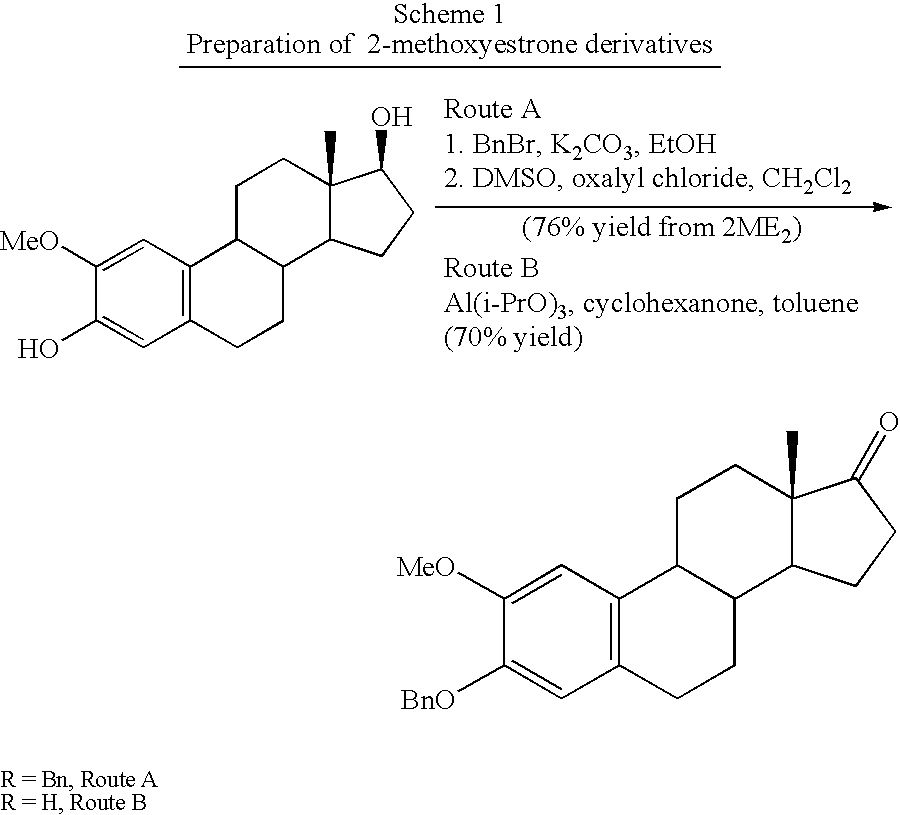Antiangiogenic agents
a technology of antiangiogenic agents and amide active ingredients, applied in the field of antiangiogenic agents, can solve the problems of slow and linear growth rate of tumor implants, rapid and nearly exponential growth rate, and achieve the effects of improving absorption, transport, and biological stability
- Summary
- Abstract
- Description
- Claims
- Application Information
AI Technical Summary
Benefits of technology
Problems solved by technology
Method used
Image
Examples
example 1
Synthesis of 2ME2 Derivatives and Modifications at the 17 Position
[0203]Synthesis of the 2ME2 derivatives described herein is within the capability of one ordinarily skilled in the art. The synthetic pathways used to prepare derivatives of estradiol modified at the 17 position of the present invention are based on modified published literature procedures for estradiol derivatives cited earlier. Examples of modifications at the 17 position are provided in Examples 2 through 13 below.
example 2
Spectral Data of 17-α-hydroxy-2-methoxyestradiol (Table 1, Entry 2)
[0204]Selected spectral data: 1H NMR (300 MHz, CDCl3) δ 6.83 (s, 1H), 6.67 (s, 1H ), 5.44 (s, 1H), 3.88 (s, 3H), 3.83 (d, J=6 Hz, 1H), 2.84–2.75 (m, 2H), 2.41–2.16 (m, 3H), 1.97–1.21 (m, 10H), 0.73 (s, 3H). Anal (C19H26O3) calcd C=75.46, H=98.67, found C=75.18, H=8.70
example 3
Spectral Data of 17-dehydroxy-2-methoxyestradiol (Table 1, Entry 3)
[0205]Selected spectral data: 1H NMR (CDCl3, ppm), 6.85 (1H, s, aromatic), 6.70 (1H, s, aromatic), 5.45 (1H, s, phenol), 3.85 (3H, s, methoxy), 2.85 (dd, J=7.0, 3.5, benzylic), 2.25 (2H, m,), 1.90 (2H, m), 1.75–1.05 (10H, m), 0.75 (3H, s). Anal. (C19H26O2), Calc.: C=79.68, H=9.09, found: C=79.65, H=9.06.
PUM
| Property | Measurement | Unit |
|---|---|---|
| volume | aaaaa | aaaaa |
| diameter | aaaaa | aaaaa |
| size | aaaaa | aaaaa |
Abstract
Description
Claims
Application Information
 Login to View More
Login to View More - R&D
- Intellectual Property
- Life Sciences
- Materials
- Tech Scout
- Unparalleled Data Quality
- Higher Quality Content
- 60% Fewer Hallucinations
Browse by: Latest US Patents, China's latest patents, Technical Efficacy Thesaurus, Application Domain, Technology Topic, Popular Technical Reports.
© 2025 PatSnap. All rights reserved.Legal|Privacy policy|Modern Slavery Act Transparency Statement|Sitemap|About US| Contact US: help@patsnap.com



